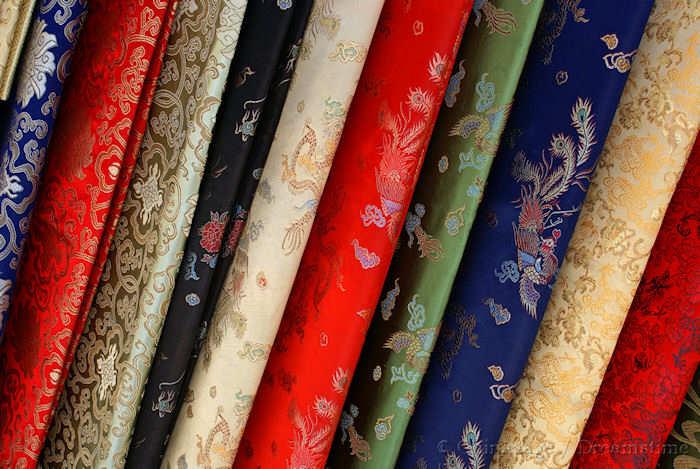Silk - the Chinese luxury fabric
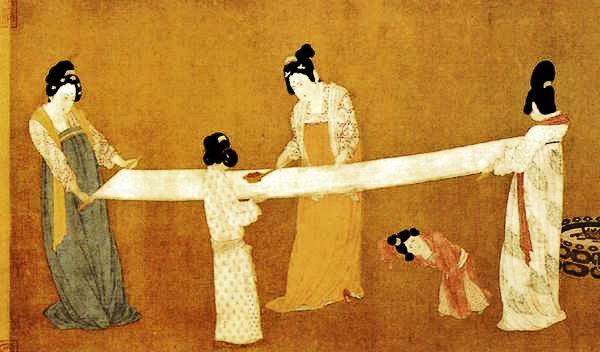
Image available under a Creative Commons license ➚
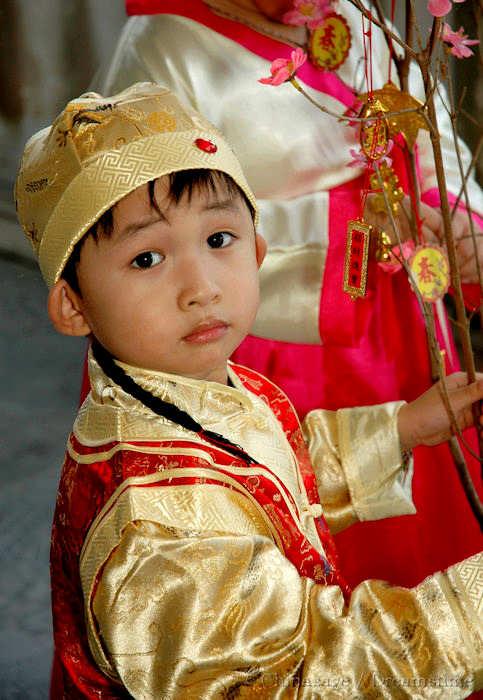
Silk is a precious fabric that brought considerable wealth and prestige to China. Silk cultivation is said to date from the time of the legendary Yellow Emperor (4,500 years ago), when Empress Leizu herself cultivated silkworms. For many centuries it was a material only made in China. At the Spring Festival every year the emperor each year plowed a ritual furrow and the empress made a ritual offering of mulberry leaves and silkworm cocoons. Archeology has confirmed silk's long history by finding silk fragments from as early as Neolithic times. Silk has found many uses not just for clothing but also for paintings and writing material as it is both soft and retains color dyes.
Silk was so precious that it was for a long time used as a form of currency. A ’bolt’ of silk had a standard length and value (roughly 22 inches [56 cms] wide 41 feet [12 meters] long). Together with silver, silk was often used as a payment to appease neighboring kingdoms. When sea trade with China grew in the Ming dynasty, silk was one of the main exports - it was light-weight, non-perishable and commanded high prices. The art of silk cultivation was kept as a closely guarded secret by the Chinese for many centuries, Pliny the Elder ➚ (23-70CE) for example believed that silk was collected by caterpillars from plant hairs rather than spun into a cocoon.
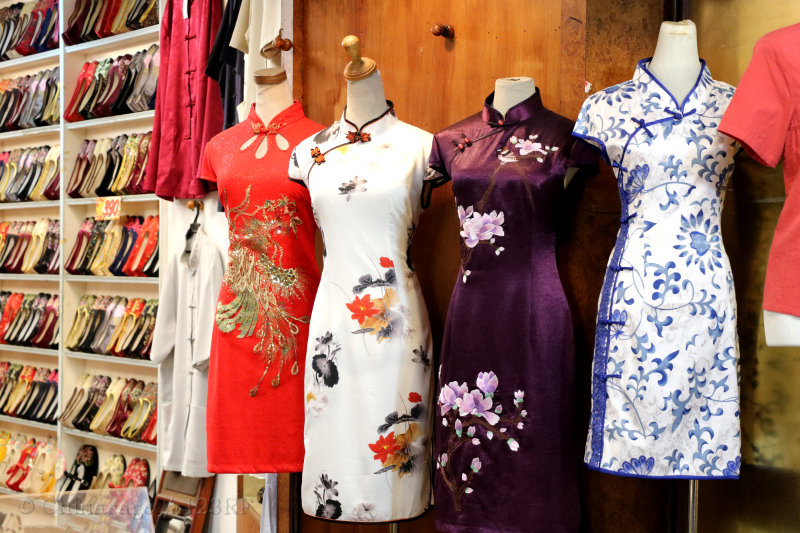
Silk in characters
Silk is represented as 丝 sī a pictograph of a coiled up silk worm. It is often used as a radical in other characters for example silk fabric is 绸 chóu and some colors (from the use of dyes), red 红 hóng and green 绿 lǜ. Xù绪 rather pleasingly combines the idea of ‘silk’ and ‘old’ to produce the character for ‘clue’ (following a silken thread) as well as ‘ancestry’ (tracing the family line). Silk represents purity and virtue and is associated with the divine weaver Qi Nu whose festival in on the seventh day of the seventh month.
Roman demand for silk and early trade with China
The Silk Road provided an epic, overland route for the export of this much prized of fabrics all the way to the Roman Empire. The raw silk thread was transported to Damascus in Syria where it was woven into cloth, and hence one name for western silk ‘damask ➚’ (the Chinese name for this fine silk is 绫 líng). Queen Cleopatra of Egypt fueled the fashion for wearing silk dresses. The Romans spent so much gold on importing Chinese silk that Emperor Tiberius ➚ forbade the wearing of silk by men. The land from where silk came from was called ‘Serica ➚’ derived from the Chinese word for silk sī. The English name ‘silk’ is believed to come from Old English ‘sioloc’ which in turn came from Greek ‘serikos’ so silk is one of the very few English words with an origin in China. The production of silk is called ‘sericulture’.
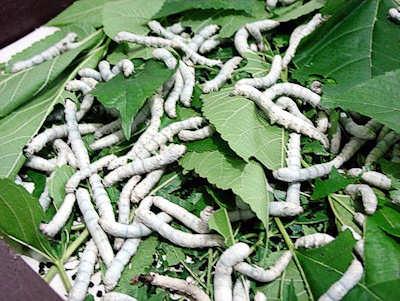
Making silk
Young silkworms, the caterpillar of the silkworm moth Bombyx mori ➚, are put on straw mats in April and are fed mulberry leaves for a month. Mulberry leaves are picked and fed to them several times a day. When ready to pupate they are placed near straw bundles where they take four days to spin their cocoons. After leaving for eight days to harden the thread, the cocoons are separated out and put in boiling water to kill the pupae. The cocoons are then unwound to make a long, single thread ready for weaving into cloth. A single cocoon can yield a mile of silk thread. For strength, six or more threads are spun together into the yarn. The yarn is then ready to be dyed. It takes around 9 pounds [4 kgs] of leaves to produce every 0.4 ounces [10.0 grams] of silk. Some pupae are allowed to develop to adult moths in order to generate eggs for the next brood. The female moth lays around 500 eggs over five days. This process permits five crops of silk to be produced within the growing year of the mulberry tree.

Cats were so essential to keeping the rats from eating the silkworms that they were often known as 'silkworm cats' 蚕猫 cán māo.
Originally silk production was a cottage industry with each family (predominantly women) manufacturing small amounts of silk. The finest silk was produced in the south, in the north a coarser off-white product was made from oak rather than mulberry leaves (in the wild the silkworm feeds on oak rather than mulberry leaves). Mulberry produces a rubbery sap and it is probably this constituent that helps the silkworms produce robust, supple fibers.
A strict code on the clothing of court officials required them to wear dyed and decorated silk. Cheaper and rougher hemp or cotton was the clothing of the mass of the people. Satin is often made from silk and has a glossy top surface and a mat back; it is made by using a different weaving pattern. The English word Satin is derived from the city of Zayton, an ancient name for Quanzhou in Fujian province. Zhejiang province has a long tradition as a center of silk production dating back at least 1,500 years. Hangzhou and Suzhou became the main centers for handling and Suzhou now has impressive silk and embroidery museums ➚.

Chinese secret exported
By the Tang dynasty porcelain began to overtake silk as the most prized Chinese export. The secret of silk manufacture was closely guarded, but by 200BCE the technology had found its way to Japan and Korea. It took a lot longer to reach the Byzantine Empire ➚ (600CE) where a silk industry at Damascus ➚ had been weaving silken cloth for centuries. An unlikely story relates how silkworm eggs were smuggled out of China in a hollow stick ➚ by Nestorian monks around 550CE. By the 13th century silk production started in Italy after crusaders captured silk producers from Damascus after the fall of the Byzantine Empire. In 1608 King James I ➚ of England issued an edict to start up a silk industry in Britain and its colonies. Unfortunately the Black Mulberry ➚ (Morus nigra) tree was planted while silkworms feed on White Mulberry ➚ (Morus alba), but in any case it is unlikely that the silkworms would have coped with the cold climate. A number of mulberry trees planted at the time of the Royal proclamation are still alive including one at Christ's College Cambridge ➚.
